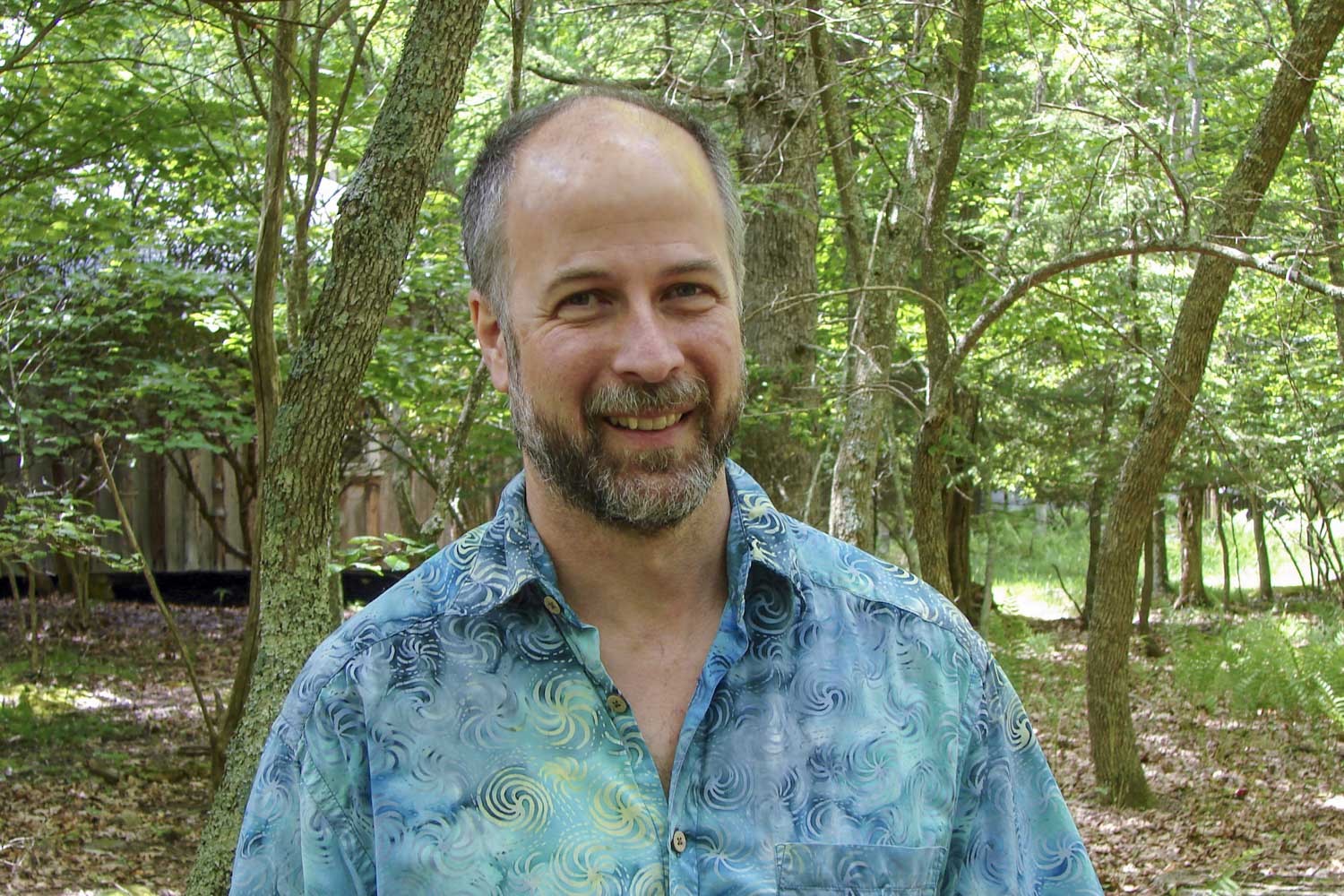[vc_row][vc_column][vc_row_inner][vc_column_inner][vc_column_text]
STUDENT REFLECTIONS FROM THE 2018 VT ECUADOR STUDY ABROAD TRIP
[/vc_column_text][vc_column_text]
On one of our night hikes at Shiripuno we came across a medium sized Smokey jungle frog (Leptodactylus pentadactylus). It’s a pretty common species in the area and they can grow to be pretty large. Even with the large size, their coloration makes them disappear against the background of the forest floor, so to spot one you have to keep a look out for eye-shine. When Dr. Hopkins saw the frog, he stepped off the trail and asked us, “Hey guys, do you want me to catch it?” and of course we all said yes, because what kind of question is that?! So, he goes and creeps up on the frog and just snatches it off the ground- an act which I later tried to perform, and failed. The frog was big enough to need two hands to control it, especially since it immediately puffed itself up upon being captured. Then came the part that I wasn’t prepared for, the alarm call. The frog started to emit a high-pitched screaming cry that was so loud it made us all cringe. It is certainly an excellent escape strategy because it was so obnoxious it made us want to let it go. We didn’t keep it for long, just enough to get a good video of the cry and just enough to make our ears start to hurt. When it was let go it only took two or three hops back into the forest to make it blend in again with the forest floor.
– Annelise Stunes, Biological Sciences[/vc_column_text][/vc_column_inner][/vc_row_inner][/vc_column][/vc_row][vc_row][vc_column][vc_video link=”https://youtu.be/hMws7w951gs” align=”center” title=”Alarm call of the smokey jungle frog”][/vc_column][/vc_row][vc_row][vc_column][vc_column_text]Video provided by Annelise Stunes.[/vc_column_text][vc_separator][/vc_column][/vc_row][vc_row][vc_column][vc_column_text]The Green Wall.
Over the course of this trip I have seen some spectacular views. We have hiked to viewpoints that gaze over the endless Amazon river basin, clambered over mountain passes in bouncing busses, staring in awe as a volcano emerges through the clouds. I’ve even seen the reaction on my classmate’s face as one of the particularly powerful bounces on the bus sent the soup in his hand flying through the air and splashing down into his lap. All of these views are amazing and if had been captured professionally could have been stock images that Apple uses for their screensavers (yes, especially Mark’s soup face). However, just recently I witnessed the most spectacular view I think I have seen on this trip and perhaps in my life.
As our group sputtered along a muddy trail along a creek we were heavily focused on powering through the greatest physical challenge we’ve encountered on this trip. Through our gritted teeth and soaked hair we were witness to some of the most spectacular places the cloud forest has to offer. About halfway through the hike we arrive, dripping and buzzing with energy, to a literal wall of green. Standing on a little island of rocks in the middle of the creek we faced a cliff face that was covered by the largest collection of moss and epiphytes I have ever seen. This cliff face seemed to span two acres of surface area and all of it was vibrant green. The moss had collected so much moisture and there was so much of it that water was cascading down the cliff face giving it the appearance that this was a raining wall. Hummingbirds were buzzing around the top of the cliff. The other side of the creek was another hill which was topped with humongous trees with fantastic branching canopies covered in an equal amount of moss and epiphytes as the cliff. The creek was kicking up mist and clouding the whole area and slightly masking the forest hundreds of feet above us giving it a mystical feel. It almost felt as if gnomes were going to pop and out begin running around us.
– Silas Beers, Fish and Wildlife Conservation[/vc_column_text][/vc_column][/vc_row][vc_row][vc_column][vc_separator][vc_column_text]
The time spent in the lowlands was incredible. We went on so many adventures, being in awe of the jungle the entire time. From the enormous buttresses to the heights of the canopy. I have made memories here that I couldn’t get anywhere else. From chasing howler monkeys, to watching squirrel monkeys climb over our heads. The flora and fauna of the lowlands is something you can’t describe. Being at Shiripuno showed me the importance of conserving the biodiversity in the lowlands. Our last night at Shiripuno, Fernando gave a presentation on the importance of conservation and how deforestation has affected the biodiversity. Now being here in the cloud forest, admiring the differences between the rainforest of the lowlands and the rainforest in the cloud forest, I’m seeing the beauty each one has to offer. I can see the importance of studying the natural history of the organisms in Ecuador. The rainforest is the epicenter of biodiversity, yet there is so much here that still needs to be understood. Back home, when someone talks about the rainforest it’s typically about deforestation and the need for conservation efforts in place to protect the rainforest. Thar fact that people are talking about it is great, but how to go about it is the hard part. Natural history plays an important role in conservation, if you do not understand the species, how are you able to help them? Each organism needs to be understood before it can be studied further.
– Julia Morrow, Biological Sciences[/vc_column_text][vc_separator][/vc_column][/vc_row][vc_row][vc_column][/vc_column][/vc_row]




